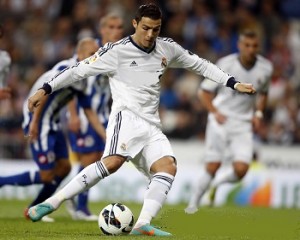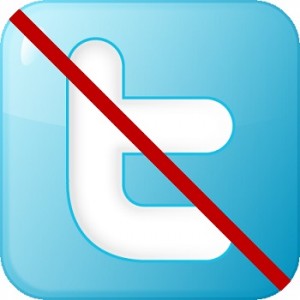A growing number of sports pros are being spotted with wearables that have sensors meant to provide bio-feedback.
As wearable technology just starts to gain a little bit of interest from regular consumers, professional athletes are being spotted with these gadgets to help to gain an edge over their competition.
These devices are helping during the training sessions of the athletes, to better understand their performance.
Among the rising number of athletes using wearable technology have been Amar’e Stoudemire, from the New York Knicks in the NBA, as well as Dwayne De Rosario from the Toronto FC in Major League Soccer. They have each been spotted using performance sensors to get the most out of the understanding of the way that they are performing in practices so that they can make the appropriate changes in order to enhance their capabilities.
Some teams have been spotted with wearable technology on all of the players during practice.
 For example, the Toronto FC Major League Soccer club is now using wearables on all of its players during their practices in order to better understand the workload and heart rate of each individual player. The coaches and doctors for the team then use the data that has been collected through these devices to know when a player should be taken from the field or when to slow them down in order to be able to avoid injuries and to ensure the best possible performance.
For example, the Toronto FC Major League Soccer club is now using wearables on all of its players during their practices in order to better understand the workload and heart rate of each individual player. The coaches and doctors for the team then use the data that has been collected through these devices to know when a player should be taken from the field or when to slow them down in order to be able to avoid injuries and to ensure the best possible performance.
That team is actually not new to wearables. In fact, it has been using them for around five years. At that time, players admitted that they didn’t see the point to it – including De Rosario, who has completely changed his opinion on the tech. He said that “Even the coaches and I were like, ‘This is a joke, you know?’”
That said, over time the opinion of wearable technology has changed. He added that “as the years have passed and it progresses, we take it more and more seriously… Things have definitely evolved in terms of the importance of tracking the data and how useful the therapists and the trainers are finding it.”
The popular online social networking service is no longer developing its Glass app.
Last week, 9to5Google reported that Twitter has stopped the development of its Google Glass application and the app has disappeared from the Glass market, which means new users or users who never installed the app on their wearable device when it was available, will not have this option now and those who previously had the app but removed it will not be able to reinstall it.
The app from Twitter is also gone from MyGlass.
The app, which first became available to the Glass market back in May of last year, is also absent from Google Glass’s management and app center, MyGlass. While it used to carry a message that stated if a user has Glass and wanted to use Twitter, they simply needed to turn on Twitter by heading to google.com/myglass, this message is now gone and once the app is deleted by a user, it cannot be reinstalled.
 A Reddit user known as pete716, who was among the first to have received early access to the device, posted about the sudden removal of the app and said that “According to Glass support Twitter is no longer developing their Glass app. This was one of my favorite and most used apps on Glass. If you remove Twitter from your Glass it disappears from Glassware and there is no option to reinstall it.”
A Reddit user known as pete716, who was among the first to have received early access to the device, posted about the sudden removal of the app and said that “According to Glass support Twitter is no longer developing their Glass app. This was one of my favorite and most used apps on Glass. If you remove Twitter from your Glass it disappears from Glassware and there is no option to reinstall it.”
Google Glass users may need to wait for a third-party app developer to fill the void.
It is not clear why Twitter dropped its support for its Glass app, especially since it seemed well liked by users and the two products are well suited to one another. However, what this means is that users of the wearable won’t be able to enjoy the tweeting experience until a third-party app developer comes along and provides a solution.
One Redditor commented that the withdrawn support from Twitter is “bad news” because of what has been implied, which is that big names like Twitter appear to be losing interest in Google Glass even before the device has hit the market for consumers. Whether or not major players are losing interest in the smart glasses has yet to be seen, but this sudden move by the popular social network has certainly raised some eyebrows.
 For example, the Toronto FC Major League Soccer club is now using wearables on all of its players during their practices in order to better understand the workload and heart rate of each individual player. The coaches and doctors for the team then use the data that has been collected through these devices to know when a player should be taken from the field or when to slow them down in order to be able to avoid injuries and to ensure the best possible performance.
For example, the Toronto FC Major League Soccer club is now using wearables on all of its players during their practices in order to better understand the workload and heart rate of each individual player. The coaches and doctors for the team then use the data that has been collected through these devices to know when a player should be taken from the field or when to slow them down in order to be able to avoid injuries and to ensure the best possible performance.
 A Reddit user known as pete716, who was among the first to have received early access to the device, posted about the sudden removal of the app and said that “According to Glass support Twitter is no longer developing their Glass app. This was one of my favorite and most used apps on Glass. If you remove Twitter from your Glass it disappears from Glassware and there is no option to reinstall it.”
A Reddit user known as pete716, who was among the first to have received early access to the device, posted about the sudden removal of the app and said that “According to Glass support Twitter is no longer developing their Glass app. This was one of my favorite and most used apps on Glass. If you remove Twitter from your Glass it disappears from Glassware and there is no option to reinstall it.”